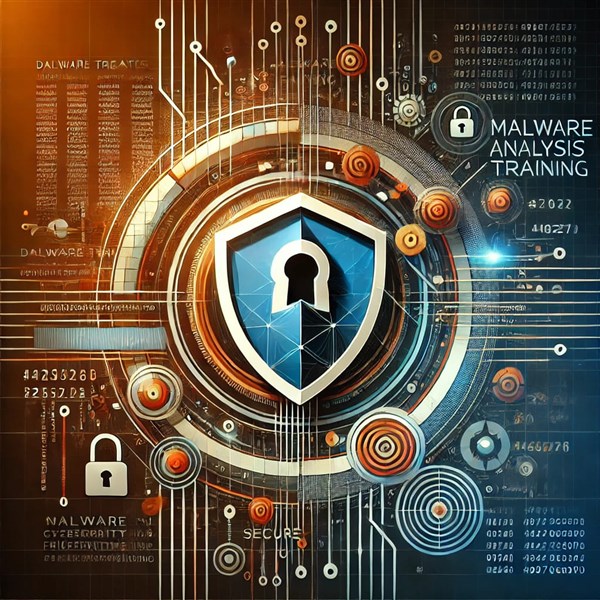We're open through the holidays to support your upskilling goals — book your session today!
We're open through the holidays to support your upskilling goals — book your session today!
Unable to find what you're searching for?
We're here to help you find it
As the cyber threat landscape evolves at breakneck speed, organizations face a constant barrage of increasingly sophisticated malware. From ransomware to spyware, rootkits to trojans — the ability to detect, dissect, and respond to malicious software has become a critical component of modern cybersecurity.
This has led to a surge in demand for malware analysts — professionals trained to analyze malicious code and uncover its behavior, intent, and indicators of compromise (IOCs). If you're an aspiring cybersecurity expert, incident responder, or threat hunter, enrolling in malware analysis training can significantly enhance your skillset and career trajectory.
But what exactly do you learn in malware analysis training? In this blog, we’ll explore the top skills you’ll gain, how they’re applied in real-world environments, and why they’re vital in defending against today’s most dangerous digital threats.
Malware analysis is the process of studying malicious software to understand its functionality, origin, and impact. This can be done through:
Malware analysts work across security operations centers (SOCs), threat intelligence teams, digital forensics units, and government agencies, using these skills to respond to breaches, create YARA rules, and enrich detection mechanisms.
What You’ll Learn:
Why It Matters:
Static analysis is the first step in identifying what a malware sample might do — without risking infection. You’ll learn how to spot malicious indicators such as hardcoded IPs, suspicious imports, or encoded payloads just by examining the file’s structure.
What You’ll Learn:
Why It Matters:
Dynamic analysis lets you observe malware behavior in real time. You’ll gain insight into how malware persists, spreads, or steals data — information critical to incident response and containment.
What You’ll Learn:
Why It Matters:
Reverse engineering allows you to fully understand a malware sample’s inner workings, even if it's obfuscated. This deep-level insight is especially useful for APT (Advanced Persistent Threat) analysis, malware family classification, and attribution.
What You’ll Learn:
Why It Matters:
Attribution helps you connect a sample to known threat actors or campaigns, accelerating detection and enabling threat hunting teams to find related activity across the network.
What You’ll Learn:
Why It Matters:
The faster you extract and share IOCs, the faster your team can detect and block similar threats. You’ll become a key player in proactive defense and security automation.
What You’ll Learn:
Why It Matters:
Modern malware often includes code to evade detection and analysis. Recognizing and neutralizing these tactics is essential for uncovering the true payload and maintaining accurate threat detection.
What You’ll Learn:
Why It Matters:
Malware analysis must be conducted in secure, controlled environments. Improper setups can lead to accidental infections or lateral movement into your organization’s network. Training ensures your analysis is both effective and safe.
What You’ll Learn:
Why It Matters:
Malware analysis is not just about the “how” — it’s about the “who” and “why.” By integrating your findings into broader threat intelligence frameworks, you enable your organization to respond with context, not just containment.
What You’ll Learn:
Why It Matters:
Being a skilled analyst isn’t enough — you need to communicate your findings effectively. Clear reporting ensures swift remediation and enhances collaboration across cybersecurity teams.
|
Skill |
Use Case Example |
|---|---|
|
Reverse Engineering |
Analyzing a zero-day exploit delivered via phishing email |
|
Dynamic Analysis |
Watching a ransomware payload encrypt files in a sandbox |
|
IOC Extraction |
Blocking malicious IPs and hashes enterprise-wide |
|
Threat Intelligence Mapping |
Correlating a new variant with a known APT group |
|
Anti-Analysis Detection |
Bypassing anti-debug traps to access hidden payloads |
This training is ideal for:
🧭 Final Thoughts
As cyber threats grow more advanced and stealthy, the need for professionals who can dive deep into malicious code and extract intelligence is more critical than ever. Malware analysis training empowers you with the knowledge, tools, and confidence to:
Whether you're looking to boost your career, contribute to national defense, or strengthen your organization’s cyber posture, malware analysis is one of the most powerful skill sets you can develop in today’s threat landscape.
✅ Final Takeaway
Malware doesn’t sleep — and neither should your defenses.
By mastering the tools and techniques taught in malware analysis training, you'll be prepared to confront today’s most dangerous digital threats — head-on, confidently, and effectively.
In the current digital age, malware threats are a significant concern for businesses across the globe. By acquiring skills in malware analysis, you become an invaluable asset to any organization, capable of safeguarding its digital assets against malicious threats. Enroll in our Malware Analysis Training today and enhance your cybersecurity career.
At Koenig Solutions, a leading IT training company, we provide comprehensive, hands-on training in malware analysis. Our courses are designed to equip you with the most sought-after skills in the field, helping you to secure your organization's digital assets effectively.

Aarav Goel has top education industry knowledge with 4 years of experience. Being a passionate blogger also does blogging on the technology niche.










